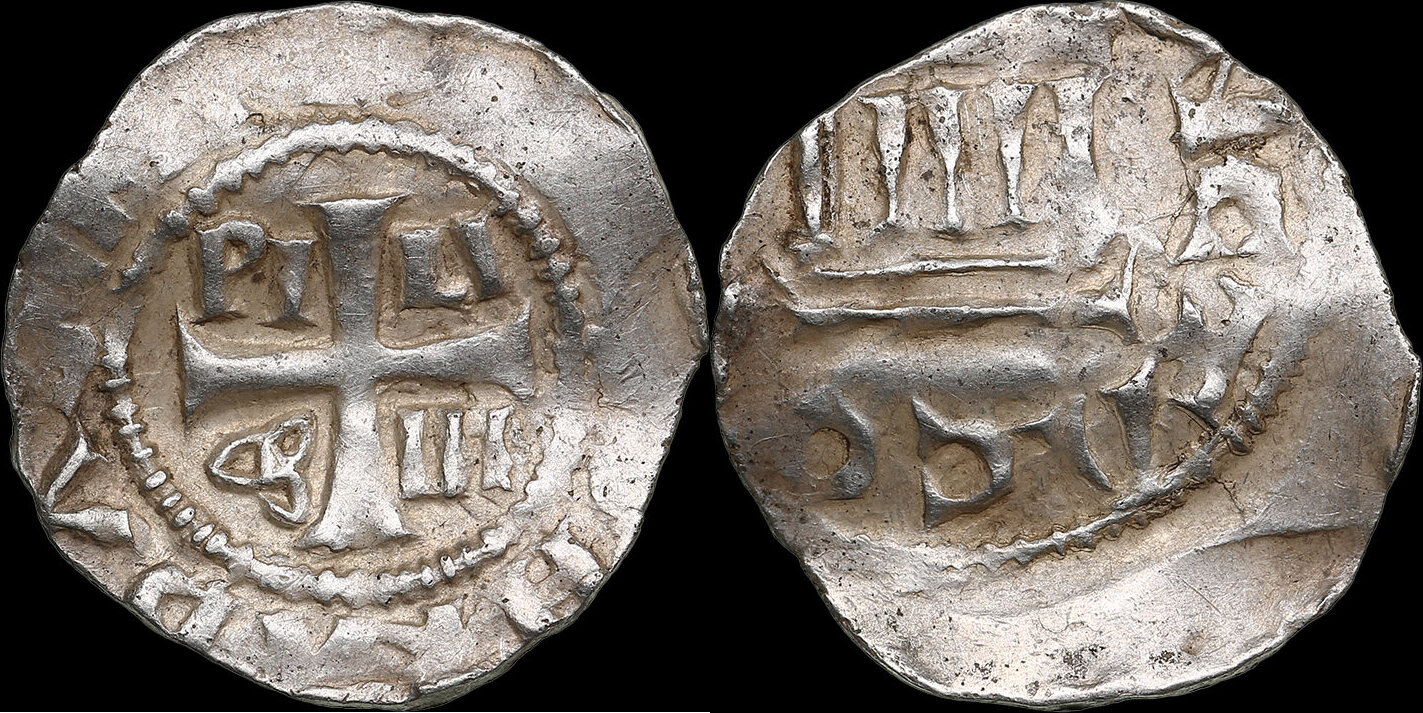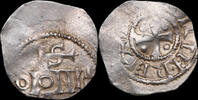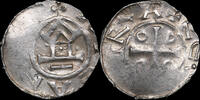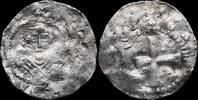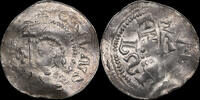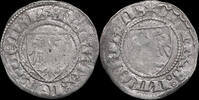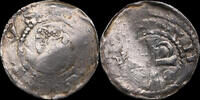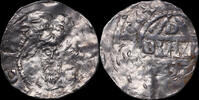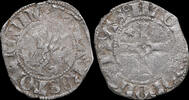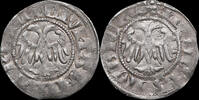MA-ID: 621402090
Customer feedback Numex OÜ
Excellent seller, highly recommended!
Thank You! Nice items for reasonable price, quick shipping! Excellent!!!
Ja, ich bin mit dem gekauften Geldschein vollig zufrieden. Danke.
M.Brindz...
Super Ware! Gerne wieder.
Köln, Erzbistum Denar ND (1021-1036) Archbishop Pilgrim, 1021-1036. Konrad II 1027-1039. Rare! XF
Numex OÜ 

9
On MA-Shops since 9 years
1195 ratings,
100 % Positive (last 24 months)
Worldwide shipping
463.82 £535,00 EUR
Import tax may be added
+ 21.67 £ shipping ( to United Kingdom )
Delivery time: 11 - 14 days
+ 21.67 £ shipping ( to United Kingdom )
| Customer Support +49 (0)2871 2180 383 |
| Payment methods |
| Wire Transfer |
The Cologne Denar of Archbishop Pilgrim and Konrad II: A Numismatic and Historical Exploration
The silver denar from the Archbishopric of Cologne (Köln, Erzbistum), minted between 1021 and 1036 under Archbishop Pilgrim (1021–1036) and associated with Emperor Konrad II (1027–1039), is a rare and finely preserved artifact of early medieval Germany. Graded as Extra Fine (XF), weighing 1.39 grams, and cataloged as Dbg 381 var., this coin offers a window into the numismatic and historical landscape of the Holy Roman Empire during the Salian dynasty. Its rarity, underscored by a lack of Häv# catalog reference, enhances its significance for collectors and historians alike.
Historical Context
Archbishop Pilgrim, who led the Archdiocese of Cologne from 1021 to 1036, was a pivotal ecclesiastical figure in the Holy Roman Empire, wielding both spiritual and temporal authority. Cologne, a major religious and economic center, was one of the most influential sees in medieval Germany, with its archbishops often serving as electors and advisors to emperors. During Pilgrim’s tenure, the empire was transitioning from the Ottonian to the Salian dynasty, with Konrad II’s coronation as Holy Roman Emperor in 1027 marking a significant moment of consolidation. Konrad II, the first Salian emperor, strengthened imperial authority through legal reforms, military campaigns, and alliances with the Church, including figures like Pilgrim.
The denar, a silver coin derived from Carolingian monetary traditions, was a cornerstone of medieval European economies. In Cologne, the archbishops controlled minting rights, producing coins that symbolized their dual role as spiritual leaders and feudal lords. This particular denar, struck during the overlap of Pilgrim’s episcopate and Konrad II’s reign (1027–1036), reflects the collaboration between ecclesiastical and imperial powers. The coin’s production in Cologne, a hub for trade along the Rhine, facilitated commerce and tribute payments, reinforcing the city’s economic prominence.
This period was marked by efforts to stabilize the empire after the Ottonian era, with Konrad II implementing policies to centralize authority and expand imperial influence into Burgundy and Italy. The denar’s creation aligns with these efforts, serving as both a practical currency and a tool of propaganda, proclaiming the legitimacy of both the archbishop and the emperor.
Numismatic Details
The denar, struck from silver with a typical weight of 1.2–1.5 grams (this specimen at 1.39 grams), is characteristic of early 11th-century German coinage. Hand-hammered on flans, these coins measure approximately 20–22 mm in diameter. The Extra Fine grade indicates excellent preservation, with sharp details and minimal wear, making this example particularly desirable despite its catalog variant status (Dbg 381 var.), which suggests slight deviations from standard designs.
Obverse: Likely features a cross within a pearl circle, with the name “Pilgrim” (often as PI-LI-GR-IM) in the angles, and an inscription such as “CHVONRADVS IMP” (Konrad, Emperor) encircling it, as seen in similar issues (e.g., Dbg 381). This design emphasizes the joint authority of the archbishop and emperor, blending Christian symbolism with imperial legitimacy.
Reverse: Typically depicts a stylized five-column church portal, representing “SANCTA COLONIA” (Holy Cologne), a nod to the city’s sacred status. The architectural motif reflects Cologne’s role as a religious center, with the cathedral’s prominence in medieval iconography.
The coin’s rarity, noted in contemporary numismatic records, stems from its limited minting period and the specific historical context of Pilgrim’s and Konrad’s collaboration. The XF condition enhances its appeal, as many surviving denars from this era show significant wear or damage. The lack of a Häv# reference suggests it may be an uncataloged variant, adding to its numismatic intrigue. With a high rarity index, such coins are prized in auctions, often fetching substantial sums due to their historical and aesthetic value.
Significance
This denar transcends its role as currency, embodying the interplay of ecclesiastical and imperial power in the early Salian period. The high silver content (typically 90% or more) ensured economic trust, vital for trade along the Rhine and for funding imperial and church activities. Numismatically, it bridges Carolingian and later medieval coinage traditions, with its cross and church motifs influencing subsequent German designs. For historians, the coin provides evidence of Cologne’s minting operations, the economic role of archbishops, and the political dynamics of Konrad II’s reign.
In modern collections, such denars are highly sought after, particularly in XF condition, as they connect directly to a transformative era in the Holy Roman Empire. The collaboration between Pilgrim and Konrad II, immortalized in this coin, underscores the Church’s role in legitimizing imperial rule, making it a tangible relic of medieval governance and faith.
In conclusion, the Cologne denar of Archbishop Pilgrim and Konrad II is a testament to a pivotal moment in European history, where religion, politics, and economics converged in the mints of a powerful city.
The silver denar from the Archbishopric of Cologne (Köln, Erzbistum), minted between 1021 and 1036 under Archbishop Pilgrim (1021–1036) and associated with Emperor Konrad II (1027–1039), is a rare and finely preserved artifact of early medieval Germany. Graded as Extra Fine (XF), weighing 1.39 grams, and cataloged as Dbg 381 var., this coin offers a window into the numismatic and historical landscape of the Holy Roman Empire during the Salian dynasty. Its rarity, underscored by a lack of Häv# catalog reference, enhances its significance for collectors and historians alike.
Historical Context
Archbishop Pilgrim, who led the Archdiocese of Cologne from 1021 to 1036, was a pivotal ecclesiastical figure in the Holy Roman Empire, wielding both spiritual and temporal authority. Cologne, a major religious and economic center, was one of the most influential sees in medieval Germany, with its archbishops often serving as electors and advisors to emperors. During Pilgrim’s tenure, the empire was transitioning from the Ottonian to the Salian dynasty, with Konrad II’s coronation as Holy Roman Emperor in 1027 marking a significant moment of consolidation. Konrad II, the first Salian emperor, strengthened imperial authority through legal reforms, military campaigns, and alliances with the Church, including figures like Pilgrim.
The denar, a silver coin derived from Carolingian monetary traditions, was a cornerstone of medieval European economies. In Cologne, the archbishops controlled minting rights, producing coins that symbolized their dual role as spiritual leaders and feudal lords. This particular denar, struck during the overlap of Pilgrim’s episcopate and Konrad II’s reign (1027–1036), reflects the collaboration between ecclesiastical and imperial powers. The coin’s production in Cologne, a hub for trade along the Rhine, facilitated commerce and tribute payments, reinforcing the city’s economic prominence.
This period was marked by efforts to stabilize the empire after the Ottonian era, with Konrad II implementing policies to centralize authority and expand imperial influence into Burgundy and Italy. The denar’s creation aligns with these efforts, serving as both a practical currency and a tool of propaganda, proclaiming the legitimacy of both the archbishop and the emperor.
Numismatic Details
The denar, struck from silver with a typical weight of 1.2–1.5 grams (this specimen at 1.39 grams), is characteristic of early 11th-century German coinage. Hand-hammered on flans, these coins measure approximately 20–22 mm in diameter. The Extra Fine grade indicates excellent preservation, with sharp details and minimal wear, making this example particularly desirable despite its catalog variant status (Dbg 381 var.), which suggests slight deviations from standard designs.
Obverse: Likely features a cross within a pearl circle, with the name “Pilgrim” (often as PI-LI-GR-IM) in the angles, and an inscription such as “CHVONRADVS IMP” (Konrad, Emperor) encircling it, as seen in similar issues (e.g., Dbg 381). This design emphasizes the joint authority of the archbishop and emperor, blending Christian symbolism with imperial legitimacy.
Reverse: Typically depicts a stylized five-column church portal, representing “SANCTA COLONIA” (Holy Cologne), a nod to the city’s sacred status. The architectural motif reflects Cologne’s role as a religious center, with the cathedral’s prominence in medieval iconography.
The coin’s rarity, noted in contemporary numismatic records, stems from its limited minting period and the specific historical context of Pilgrim’s and Konrad’s collaboration. The XF condition enhances its appeal, as many surviving denars from this era show significant wear or damage. The lack of a Häv# reference suggests it may be an uncataloged variant, adding to its numismatic intrigue. With a high rarity index, such coins are prized in auctions, often fetching substantial sums due to their historical and aesthetic value.
Significance
This denar transcends its role as currency, embodying the interplay of ecclesiastical and imperial power in the early Salian period. The high silver content (typically 90% or more) ensured economic trust, vital for trade along the Rhine and for funding imperial and church activities. Numismatically, it bridges Carolingian and later medieval coinage traditions, with its cross and church motifs influencing subsequent German designs. For historians, the coin provides evidence of Cologne’s minting operations, the economic role of archbishops, and the political dynamics of Konrad II’s reign.
In modern collections, such denars are highly sought after, particularly in XF condition, as they connect directly to a transformative era in the Holy Roman Empire. The collaboration between Pilgrim and Konrad II, immortalized in this coin, underscores the Church’s role in legitimizing imperial rule, making it a tangible relic of medieval governance and faith.
In conclusion, the Cologne denar of Archbishop Pilgrim and Konrad II is a testament to a pivotal moment in European history, where religion, politics, and economics converged in the mints of a powerful city.
Info / FAQ
| Shipping fees | ||||
|---|---|---|---|---|
| 0.87 £ to 43.35 £ | 43.35 £ to 173.39 £ | 173.39 £ to 433.48 £ | over 433.48 £ | |
| China | 10.40 £ | n/a | n/a | n/a |
| Germany | 4.33 £ | 4.33 £ | 4.33 £ | 13.00 £ |
| Estonia | 4.33 £ | 4.33 £ | 4.33 £ | 10.40 £ |
| United Kingdom | 4.33 £ | 4.33 £ | 4.33 £ | 21.67 £ |
| United States | 4.33 £ | 4.33 £ | 4.33 £ | 34.68 £ |
| European Union | 4.33 £ | 4.33 £ | 4.33 £ | 21.67 £ |
| World | 10.40 £ | 13.00 £ | 86.70 £ | 86.70 £ |
Information
Online orders are welcome as always and will be shipped directly.
|
Seller Home | 0Shopping cart | Terms of sale | Contact | MA Terms of sale | Privacy policy | Warranty | MA-Shops New Items Copyright ® 2001-2025, MA-SHOPS Coins All Rights Reserved. Designated trademarks and brands are the property of their respective owners. |
 Buy coins with warranty
Buy coins with warranty



